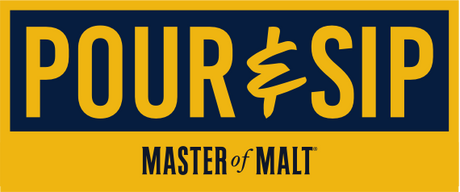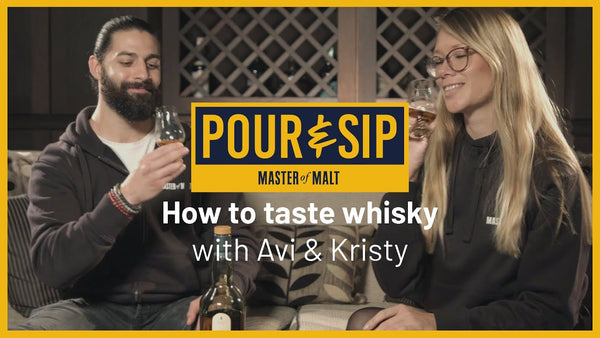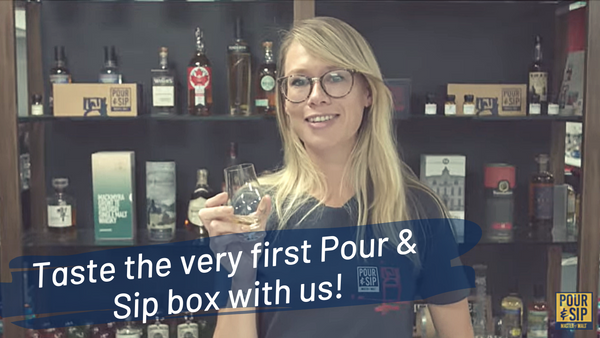What is a whiskey bonder? J.J. Corry founder Louise McGuane explains

We worked with our friends over at J.J. Corry in County Clare to bring you a Pour & Sip-exclusive Irish whiskey this month! Founder Louise McGuane is on hand to tell us all about the release, and the (almost) lost art of whiskey bonding.
When J.J. Corry came on the scene in 2015, it was the first new whiskey bonder in Ireland for over 50 years. If you haven’t heard of the term whiskey bonding before, not to worry, because we were lucky enough to grab some words from founder Louise McGuane about the art, which was almost lost to history.

“Up until the 1930s there were hundreds of whiskey bonders in Ireland,” McGuane tells me. “When I discovered the J.J. Corry brand, which was a well-known bonder in my county in the 1800s, I decided to bring the lost art of whiskey bonding back!” Rather than maturing, bottling and branding whiskey themselves, as most distilleries do now, Irish distillers would let independent merchants known as bonders deal with all of that. “Quite often bonders would custom blend whiskeys for their customers, leading to a huge variety of flavours. As a modern Irish whiskey bonder, we source both mature, rare whiskey and new make from distilleries all over Ireland and bring them to our farm to mature.”

So what happened after the 1930s? “The practice died out due to the near-collapse of the Irish whiskey industry in the early 1900s. We went from having hundreds of distilleries on the island to only a handful,” says McGuane. Distilleries no longer needed the bonders to mature, blend, and bottle the whiskey – they were doing it themselves. “I felt that my contribution to the rebirth of the industry was to bring back this lost art.”
Bringing back an entire movement is no mean feat, but it helped that McGuane had a couple of decades’ experience in the drinks industry, with stints at Moët Hennessey, Pernod Ricard, and Diageo under her belt. “Ultimately, though, in corporate life I was a square peg in a round hole,” she admits. “I was privy to industry intel and could read that Irish whiskey was about to follow the path of American craft whiskey in that the time was right for radical growth and change.”

Her intel was clearly good, as Irish whiskey has gone from strength to strength. “People are moving away from bigger brands and are seeking out authenticity, willing to try non-traditional flavours. Irish whiskey is no doubt the stand-out in terms of growth in popularity, it is becoming incredibly collectible,” McGuane tells me. “Rather than setting up a grain to glass distillery, I purposely built a rackhouse on the family farm and began to build a library of Irish whiskey flavours.” She does this by sourcing whiskey from distilleries all over Ireland, and casks from wineries, distilleries, and coopers all over the world.
That means there’s a plethora of different malt and grain whiskeys, maturing in different cask types, to play around with. But that also seems like an overwhelming amount of choice, to an unseasoned blender like me. McGuane explained the process to me: “We match those individual whiskeys to cask types and mature them on site. Each cask we have is then classified into a flavour block and when ready, we pull flavours from those blocks and blend them to create our expressions.” It isn’t just McGuane of course, she works with a team of ‘noses’ (yes, that’s a real job) to regularly check on the spirits in the casks.

That brings me onto our very own Pour & Sip-exclusive whiskey, Lasóg! “I loved working on Lasóg with the Pour & Sip team,” says McGuane.. “We used 19- and 15-year-old malt to form 60% of the blend and then incorporated 5-year-old grain – all ex-bourbon barrels. It is quite a complex, juicy fruit bomb blend which is a profile I have a soft spot for.” I can relate to the soft spot – having a specially-made whiskey from such a seasoned blender is a joy. With new distilleries popping up all over the country, the future is looking bright for J.J. Corry, and Irish whiskey as a whole: “It’s a great time to be a whiskey bonder!”



